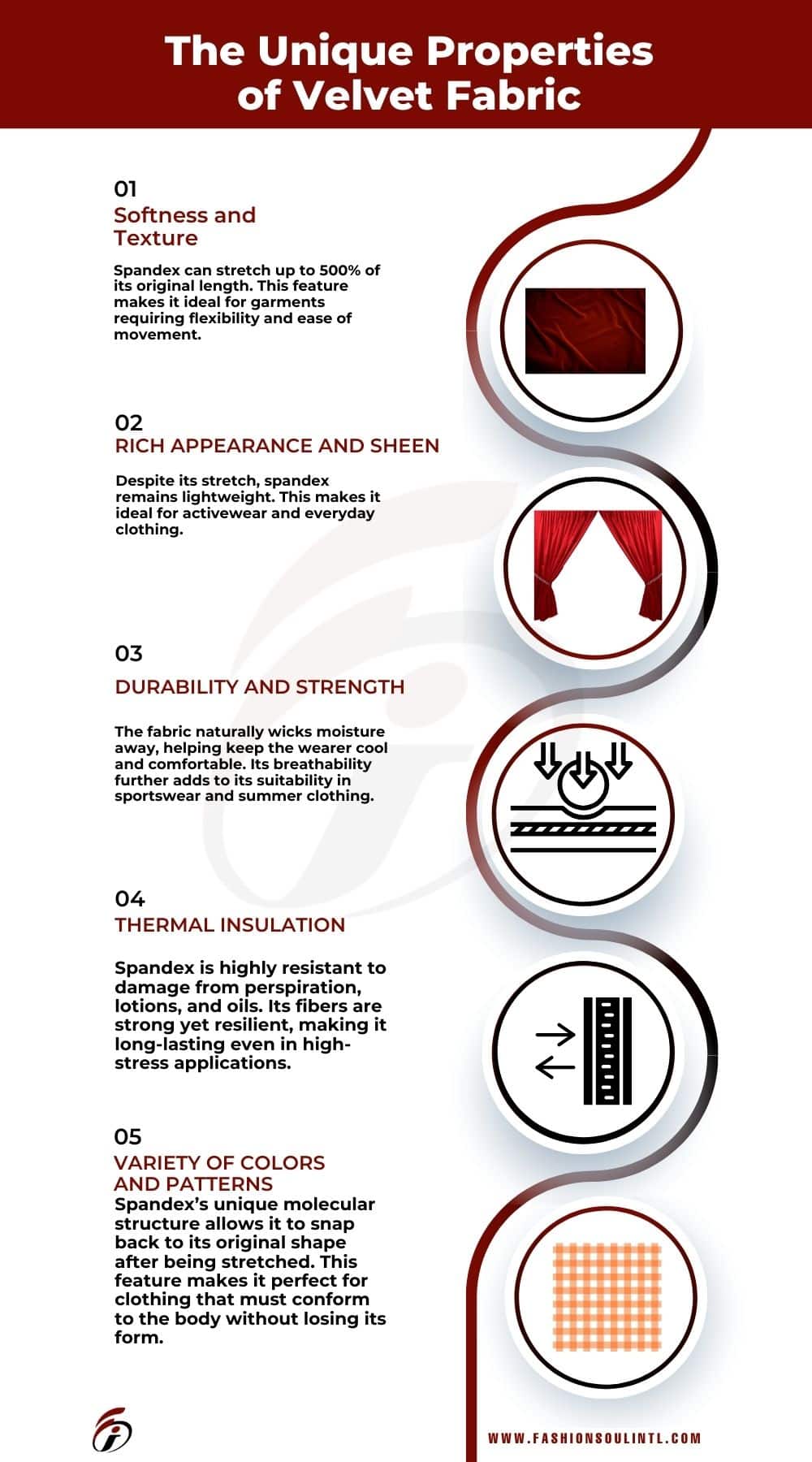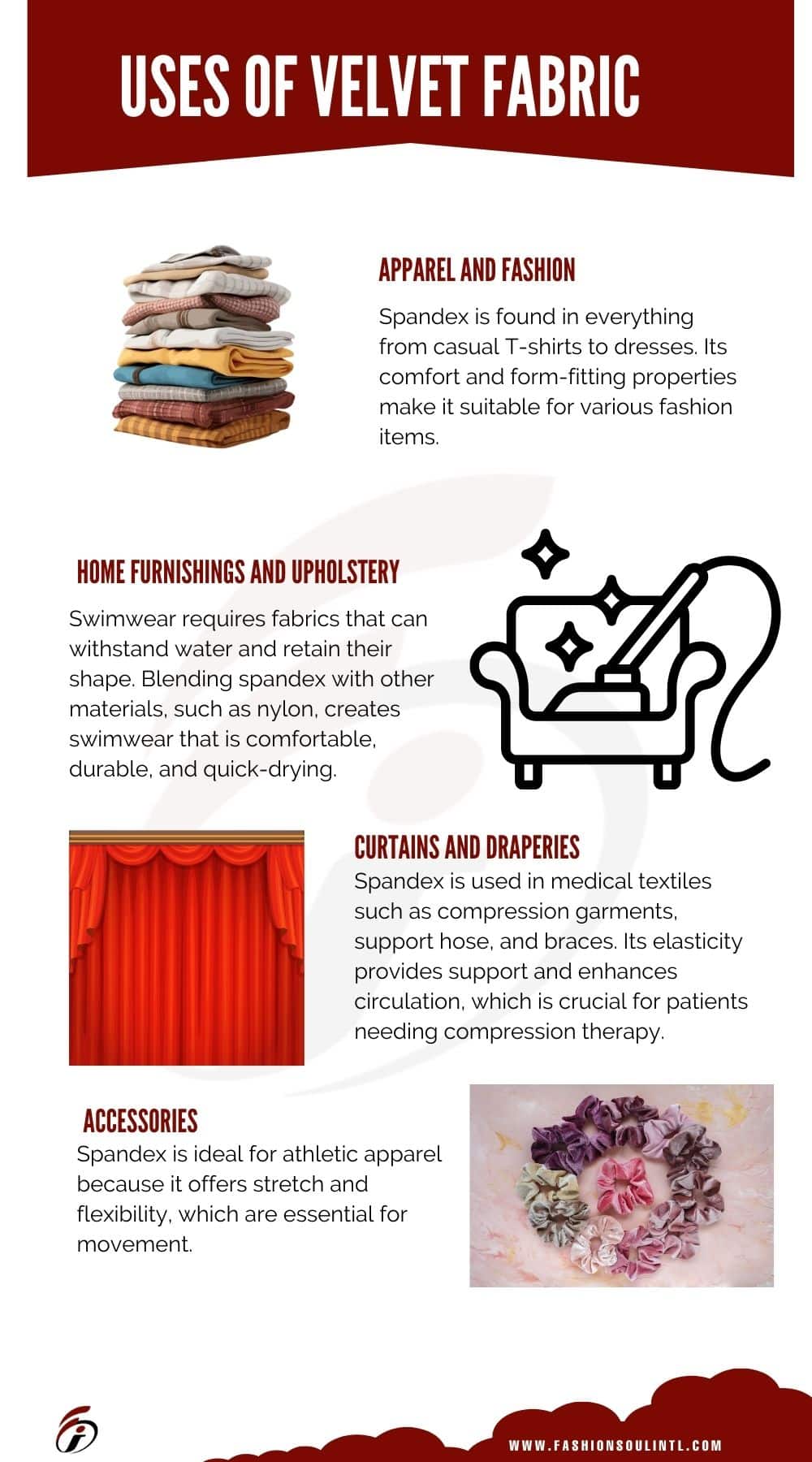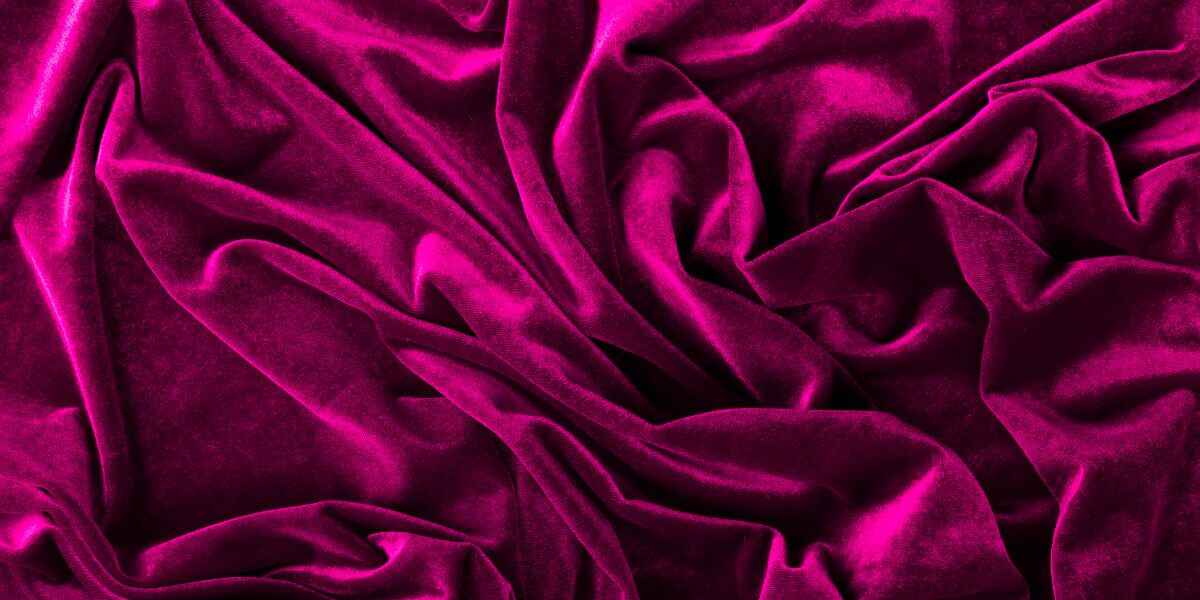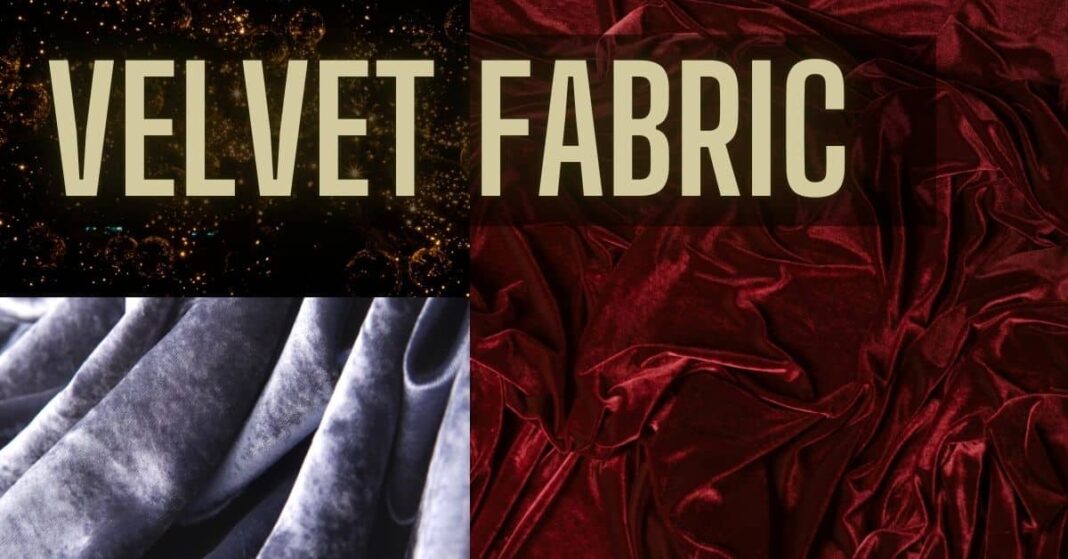Velvet is luxurious, plush, and endlessly timeless — one of those fabrics you can’t help but fall for. Notably, velvet is a material with thick piles, making it exceptionally soft to the touch. Additionally, it comes in a variety of shades, adding versatility to its appeal. Throughout history, velvet has made its mark across various areas, from fashion trends and home interiors to much more. Consequently, its enduring charm continues to captivate and enrich design in multiple settings So, what is velvet fabric and why does it take the crown? Today we wanted to explore some of its unique properties and many uses, along with a detailed construction oriented making process that helps highlight why this material is so compelling.
Introduction: The Allure of Velvet Fabric
What Makes Velvet Different: It has a thick and almost furry texture, it is soft to touch, sleek (similar but different than how satin reflects light; velvet captures rather than reflect) Often associated with the image of kings and luxury, this cloth is what touches warmth and sophistication into anything. Velvet has been passed down through generations in a complex process of manipulation that has become highly versatile and found today in not only contemporary fashion but also upholstery and even technical applications. The above is an overview of the features and manufacturing process of velvet that tells a favored choice for many looking to adorn their setting with style in addition comfort.
What is Velvet Fabric?
Velvet is a tufted woven fabric with short dense pile. Pile: The loops or strand ends (use to make the fabric that is raised for velvet). Velvet: Velvet is also woven on a special loom and made with fibers of silk, cotton or synthetics. Its pile reflects light in its own unique way to give it a luster unlike any other fabric. Now that sticking out in a velvet fabric is falling, and the material manufacturing techniques have developed specially significant to make this content even softer for at home use.
Velvet is made by weaving two layers of fabric at the same time and then cutting them apart to create a dense, soft pile. Designers, as well as the buyers among clients are fond of it for its aesthetic and especially functional characteristics.

Properties of Velvet Fabric
The essence of velvet exists in its multiple qualities making it different from other fabric. Some of what makes velvet so in demand.
Softness and Texture
One of the softest-touch fabrics: velvet. The pile of the fabric adds warmth and softness which makes it alluring in garments as well as upholstery.
Rich Appearance and Sheen
The sea of green velvet pile both traps and reflects the light, which produces this beautiful lustre. One hallmark of the new green comes from its added lux with clothes, furniture and accessories.
Durability and Strength
Velvet is surprisingly strong, too – as I said earlier: soft to the touch but tough on wear and tear especially if woven with some synthetic or blended fibers. This is also a strong fabric which makes it fairly resistant to wear and tear, making ta durable choice for furniture upholstery in areas with heavy use or long-lasting clothing.
Thermal Insulation
Due to its dense pile, velvet has superior heat insulation properties making it an essential for all winter wear uses and can also be used as a decorative addition due the instant warmth brought into interiors.
Wide Range of Colors and Patterns
Dye has a tendency to bind well with velvet, allowing it to absorb vibrant color. Velvet comes in countless colors and categories, from bold jewel tones to soft pastels so no matter your mood or aesthetic there’s a velvet for you.
Versatility in Application
Its distinctive structure and feel make velvet appropriate for both elegant garments in addition to strong upholstery. The thing is that it can be suitable to technical uses and this means we have a broad variety of application industries for Graphene.

Velvet Fabric Making Process
Velvet fabrics are not only extremely difficult to produce but also rather time-consuming, which amongst other factors labels it as one of the most exclusive and luxurious materials available. You can learn more in details about how is velvet made from this video:
Choosing and Preparing The Fibers
The most important aspect of velvet-making is to get the right fibers. Silk is the traditional fiber for velvet, but in modern times other materials have been used instead of or with silk. These fibers are then processed into yarn to be woven.
Constructing the Fabric sandwich
Velvet can be woven on a special loom that weaves two thicknesses of the material at once. It includes interlacing them with an additional set of warp yarns, which in turn form the pile.
Slitting the Layers to Form Pile
This process causes workers to pry apart the two layers as they cut through the extra warp yarns that form the velvet’s pile. This cutting is what creates the soft, plush texture of velvet.
Dyeing and Finishing
Dyers color the fabric after weaving to achieve the required shade. Velvet absorbs dye effectively, allowing it to display a uniform, satiny hue throughout. Finishers then polish the pile, ensuring a smooth texture and an attractive appearance.
Check and Quality Control
After completing the process, inspectors examine the fabric for any faulty or uneven fabrication. They carefully scrutinize each piece to ensure the pile is uniform, the color is accurate, and there are no cracks in the texture. High-quality velvets undergo a series of tests before becoming available for sale.

Types of Velvet Fabric
There are different kinds of velvet suitable for different purposes and with unique features. Here are the major types of velvet fabric that we have today
Crushed Velvet
Crushed velvet, characterized by its crumpled, rumpled effect, is created by twisting or pressing ridged patterning into wet pile fabric. As a result, this technique gives the fabric a unique, creased texture that enhances its visual appeal. Additionally, the shape and texture of crushed velvet make it very fashion-forward, bringing an element of sophisticated style to any design. Therefore, crushed velvet not only adds depth but also provides a distinctive, eye-catching aesthetic.
Stretch Velvet
Stretch velvet- Spandex is incorporated into the mixture of basic materials to create stretch within a fabric giving it fit for purpose use in bodycon dresses, leggings and activewear.
Panne Velvet
Only in one direction, a crushed velvet has been manufactured to get the reflective shine. Its luxurious look has made panne velvet a favorite fabric in evening wear and costumes.
Silk Velvet
Silk VelvetThe most elegant of all, silk velvet is supremely opulent and plush. Its quality and characteristics make it a favourite choice for high-end fashion as well as premium upholstery.
Cotton Velvet
Cotton velvet is durable and has a matte finish. It is less shiny than other materials and holds up well, perfect for upholstery.
Velveteen
Velveteen: A velours fabric with a cotton pile on one side. It is commonly used in garments that need stability, like jackets and pants.
Embossed Velvet
Embossed velvet is where designs are heated into the fabric to create patterns. This makes patterns or textures, giving adornments to attire or upholstery.
Common Uses of Velvet Fabric
Velvet is widely used for its luxury appearance and feel. Below are some of the major usage methods for velvet fabric:-
Apparel and Fashion
It is a common textile in fashion, used mostly for formal or evening wear. A classic velvet can never go wrong, as attires like dresses or suits in the elegant fabric add more sophistication for its wearer. It is also very populat in casual and activewear as well due to its comfortable nature and how pretty it looks.
Furnishings and Upholstery Home
Velvet is a preferred choice of material for sofas, chairs, and cushions, as it combines both durability and softness. Moreover, the unique way burl reflects light and color enhances its cozy appeal, making it an ideal choice for any interior design. Additionally, this reflective quality adds depth to a room’s aesthetic, creating a warm and inviting atmosphere. Therefore, velvet not only provides comfort but also contributes to a stylish and welcoming home decor.
Curtains and Draperies
The weight and insulating properties of velvet make it perfect for curtains. Velvet curtains evoke hotel elegance in a well-appointed room, adding both beauty and practical value by blocking light and enhancing insulation.
Accessories
When it comes to accessories, from handbags and shoes to belts, velvet is a way of infusing them with the plush nature! Pretty versatile also in that it can go with just about any fashion style which makes it a great evening accessory.
Technical Uses
Applications that require a specific appearance, like soundproofing panels in recording studios and car soft tops, also use velvet. Because of its denser properties, it is the perfect choice for sound absorption and tuning acoustics in large spaces like theaters cinemas auditoriums recording studios.
Costume And Theatrical Clothing
Costume designers use velvet in historical clothing and theatrical costumes, favoring it for period films and high-fashion runways due to its dramatic effect.

How to Take Care of Velvet Fabric
Although velvet is strong, it requires careful handling to preserve its sheen and plushness for decades. How to Care for a Velvet — The need of the hour Washing Tips
Regular Brushing
With a soft brush, gently dust and fluff pile. All you need to do is occasionally (like once a week) vacuum velvet, and boom – no dust buildup and it still feels lush.
Avoid Excessive Moisture
Too much moisture can also mar the velvet and flatten its pile. If velvet gets wet, allow it to air dry, then carefully fluff the pile once it’s dry.
Professional Cleaning
For upholstery and delicate clothing, dry cleaning is recommended. Velvet should be dry cleaned by an experienced professional to preserve its texture.
Steaming Rather Than Ironing
Do not iron velvet directly: Velvet is sensitive to heat Fur when stored compressed. it is very likely to be wrinkled if you need to remove. them a garment steamer used at safe distance should help relax the fibers. without setting down all with compression that will spread on pile sides.

Velvet Fabric: Sustainable Alternatives and Innovations
As the demand for sustainable fabrics increases, velvet is no exception. New developments have led to more environmentally friendly alternatives like cotton velvet or recycled synthetic fibers. These alternatives preserve the luxurious qualities of velvet, reduce its environmental impact. and offer consumers a guilt-free way to enjoy this elegant fabric.
Conclusion: Velvet’s Timeless Charm
It is certainly no stranger to luxury, having begun in the ancient world and continuing to captivate with all these centuries behind it. The fabric is also versatile, combining beauty with softness and durability that remains a popular choice for designers and homeowners. Velvet is always a good idea—whether in your closet, living room or on the stage hanging behind Christopher Plummer. Handle it well and take care of it, velvet is a classic that embodies sophistication and charisma for ages to come.
FAQs
Yes indeed, made from synthetic or cotton blends most velvets are up to the task for use such as upholstery and even fashion.
Despite the fact that velvet is rather compact and has a touch of weakness in its surface, velveteen carries out this condition even further. Velveteen is usually stronger and used in construction of garments.
Because of the unique sheen and rich texture that is due to its complex method of manufacture, velvet was commonly considered as a luxury material for centuries.


